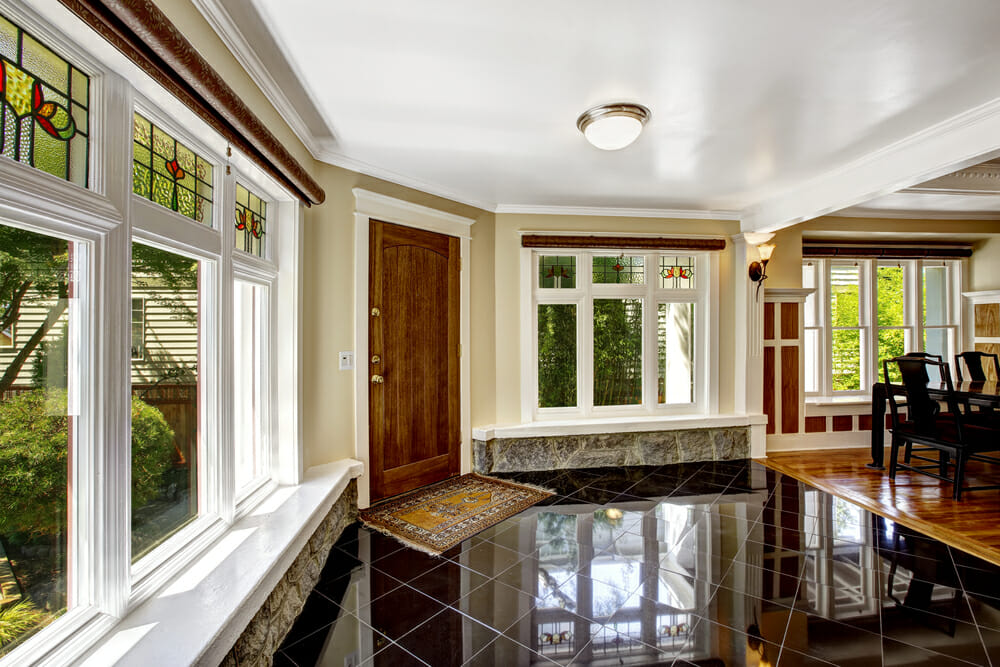1-800-558-0119
1-800-558-0119

Truly polished decor mostly comes down to those tiny touches throughout your home. It’s that great accent lamp you got from an estate sale, the unique glass hardware installed on a set of drawers, or—best of all—beautiful trim moulding on your windows. Trim moulding adds intention to your interior design, elevating the overall impact of your windows. It makes them stand out as an architectural focal point, rather seeming like an unfinished afterthought.
Moulding makes a great DIY project, even for those homeowners with little to no experience in home renovations. Plus, it can even help boost your window’s energy efficiency. Let’s take a look at the basics of window trim moulding, so you can decide if this decor element is right for your home.

Builders and homeowners use moulding in a variety of locations throughout the home. Decorative crown moulding adds an accent around the base of a ceiling, while baseboard moulding goes between the floor and the wall to make it appear more finished.
Window trim, often referred to as casing, measures between two to three inches in most cases, and comes in a range of different styles. Most homeowners purchase it pre-cut from a home improvement store. However, if you want something truly unique, you can also hire a woodworker or frame maker to hand carve designs into the wood.
Window trim can be as embellished or minimalist as you like. While many different types of trim exist for windows, you don’t necessarily have to add every single part. Each piece performs a different function and must be joined to the surrounding trim, as well. Here’s a list of the different pieces.
Now that you’ve familiarized yourself with the parts of window moulding, read on to decide how to best integrate these into your home’s existing aesthetic.

Your home’s aesthetic and architectural design should largely inform the type of trim moulding you choose. For instance, if you have a classical home design, such as a Georgian, Federal, or Greek Revival, an entablature—made up out of crown moulding and frieze board—will add historical authenticity to your home decor. If you have a Victorian style home, try a custom-made high-profile casing. Complete with square-cut joints and rosettes, it will capture the ornate aesthetic so favored in that time period.
If your style tends toward more modernist sensibilities, a more nuanced trim, like a simple casing with clean lines, makes a better approach. Usually these casings match the color of the existing window frame for a more subtle effect. But if you’re looking for something eye-catching in a modern home, choose large side casing that keeps the clean lines, but measures wider than the traditional three to four inches.
And if you’re just looking for something simple, a low-profile casing makes a suitable choice for almost any type of home decor. These utilitarian trims help to block wind from entering your home through the sides of the window frame, without adding cluttering up your interiors with too much flash.
You should also take into consideration the aesthetic profile of the existing baseboards, crown moulding, and other trim throughout the room, as well. You want your windows to match the feel of the rest of your home, instead of standing in jarring contrast to it.
Window trim isn’t all about style and design, of course. Casings also defray drafts and help boost the energy efficiency of your window frames. Trim covers gaps between the wall opening and window frame—especially when you seal behind the windows with foam sealant spray. Also make sure to caulk between the edge of the moulding and the wall, where the window frame meets the casing, and around all other joints. With properly installed window trim, your home can be more beautiful and more comfortable!
About Erin Vaughan

{"one"=>"Select 2 or 3 items to compare", "other"=>"{{ count }} of 3 items selected"}
Comments
Leave a comment